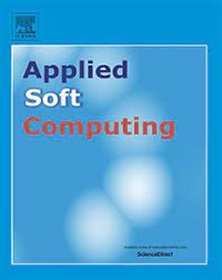A dynamic parameters genetic algorithm for collaborative strike task allocation of unmanned aerial vehicle clusters towards heterogeneous targets
IF 7.2
1区 计算机科学
Q1 COMPUTER SCIENCE, ARTIFICIAL INTELLIGENCE
引用次数: 0
Abstract
Collaborative strikes by unmanned aerial vehicle clusters (UAVCs) is becoming a key focus in the future air warfare, which can significantly enhance warfare effectiveness and reduce costs. To exactly describe the real battlefield scenarios, various heterogeneous strike-targets should be embedded. However, it will significantly increase the complexity of multi-constraint combinatorial optimization problem, thus the traditional genetic algorithm (GA) is difficult to solve efficiently due to its unchanged gene operator. In this paper, a dynamic parameters genetic algorithm has been proposed for UAVCs collaborative task allocation towards heterogeneous targets. Firstly, according to the differences of type, value, combat and defense, the heterogeneous strike-targets have been abstracted into strike target points and the UAVCs have been formulated into a set. Secondly, an innovative multiple unmanned aerial vehicles duplicate tasks orienteering problem (MUDTOP) model has been built to achieve multiple strikes on certain targets. Finally, the new triple-chromosome encoding and duplicate gene segments have been designed, and a novel genetic algorithm called DPGA-TEDG has been presented through dynamic gene operator. Experimental comparison results across various battlefield scales demonstrate that the outcomes of the proposed DPGA-TEDG algorithm not only meet practical requirements, but also outperform that of the other three algorithms in both optimality and robustness. Especially, in the battlefield scale environment of 180 km* 180 km, the average objective value of DPGA-TEDG is better than that of traditional genetic algorithm (GA-TEDG), simulated annealing algorithm (SA) and particle swarm optimization algorithm (PSO) about 2.71 %, 6.58 % and 20.49 %, respectively.
求助全文
约1分钟内获得全文
求助全文
来源期刊

Applied Soft Computing
工程技术-计算机:跨学科应用
CiteScore
15.80
自引率
6.90%
发文量
874
审稿时长
10.9 months
期刊介绍:
Applied Soft Computing is an international journal promoting an integrated view of soft computing to solve real life problems.The focus is to publish the highest quality research in application and convergence of the areas of Fuzzy Logic, Neural Networks, Evolutionary Computing, Rough Sets and other similar techniques to address real world complexities.
Applied Soft Computing is a rolling publication: articles are published as soon as the editor-in-chief has accepted them. Therefore, the web site will continuously be updated with new articles and the publication time will be short.
 求助内容:
求助内容: 应助结果提醒方式:
应助结果提醒方式:


